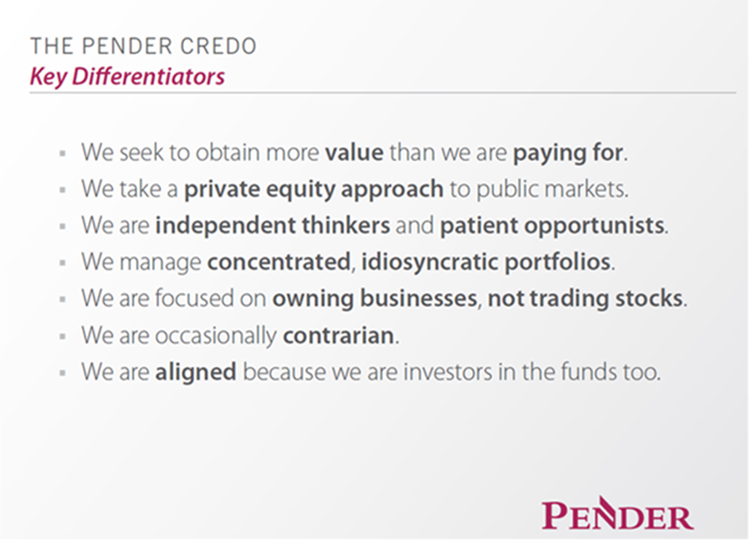
“What is popular isn’t always the truth. And the truth isn’t always popular.”–Howard Cosell, US sports journalist
Contrarians have a bad reputation. People think we’re ornery and reflexively pessimistic. I beg to differ. On the contrary (!), contrarians can also be rational opportunists who look for the silver linings and where the glass may be half full, not half empty. According to the Merriam-Webster dictionary, in investing, a contrarian is “an investor who buys shares of stock when most others are selling and who sells when others are buying.”
Warren Buffett, chair and CEO of Berkshire Hathaway Inc., is a perfect example of a highly successful contrarian investor. He has been quoted many times on the topic: “Be fearful when others are greedy and greedy when others are fearful”; “you pay a very high price in the stock market for a cheery consensus”. These musings are part of the everyday investor lexicon.
Let’s be honest: To be a contrarian requires having thick skin. Read biographies and you will find that most successful entrepreneurs had a contrarian bent, daring to see opportunities where others did not, and forging ahead persistently despite the many naysayers. When it comes to investing, the same applies. As Warren Buffett surmised, “A public opinion poll will not get you rich on Wall Street”. In the short term it is much easier to simply go along with the crowd—accepting market returns. In his earliest memo in 2006 to clients, Howard Marks, founder of Oaktree Capital Management, wrote: “This just in: You can’t take the same actions as everyone else and expect to outperform.” Appropriately, he titled a recent memo from this year: “I Beg to Differ!”
The Cost of Crowded Trade
Beyond the wherewithal to stand apart from the crowd, you also need to have favourable odds relative to expectations. This requires analytical rigour. As investment strategist Michael Mauboussin noted, “A contrarian investor focuses not only on the general sentiment, but more importantly on how that sentiment can lead to disconnects between fundamentals and expectations.” By fundamentals, Mauboussin refers to the fundamentals of the publicly traded business; expectations are what are reflected in the asset price. He gives the example of horse racing where the fundamentals are derived from the horse’s records and stats and the expectations are reflected by the odds on the board. There are actually a few people who make a living by betting at the racetrack even after paying the full 17% vig, or amount required to place the bet, to the house. Betting on the favourite horse won’t get you far over the long run if everyone else is also doing the same. Rather, betting on the mispriced horse where other betters have occasionally misjudged the probabilities of winning is the name of the game. The best bet is never obvious. What matters is the odds. Everyone goes to the track and bets and the odds change based on what’s bet. That’s also what happens in the stock market.
Assessing probabilities takes a disciplined mindset. Today, consumer sentiment is exceptionally gloomy. Being a contrarian on autopilot can be as hazardous to future returns as blindly following herd behavior. Tactical or rational contrarianism exploits expectation gaps during periods of market inefficiency which tends to be higher when investor sentiment is extreme. It is harder to be rational when your mind is in an agitated state.
When the Wisdom of Crowds Breaks Down
Rational contrarianism does not come naturally to most people. Like other species, through millennia humans have learned to cling together for safety. Specifically, in the investing world, and for professional reasons, it’s often easier to hew to benchmarks than to diverge from them. It’s impossible to practice rational contrarianism without independence and a long-term orientation.
Here’s the thing: the crowd is usually, roughly, right; the key is to identify those situations and conditions when the crowd is likely to be wrong. One of my favourite books on the subject is Wisdom of Crowds by James Surowiecki where he describes 5 conditions when crowds are likely to be right. You probably should not make big bets against the crowd when those conditions hold, but there are times when the crowd’s “wisdom” breaks down. That’s when independent thinking has a greater chance to pay off. Being a contrarian requires a strong will and patience. The path of least resistance is to go with the flow but, as an investor, that strategy rarely generates above-average long-term returns.
The opportunity to engage in critical thinking comes from running an independently owned business and taking a long-term view of capital growth. It’s fitting that The Pender Credo (see below) which delineates our key differentiators includes the phrase: “We are occasionally contrarian.” It also states, “we are independent thinkers and patient opportunists focused on owning businesses, not trading stocks”. These are not simply words; they are values we embody through all market cycles.

As the end of this month marks Hallowe’en, I’ll sign off with a treat (not a trick) from Buffett: “A contrarian approach is just as foolish as a follow-the-crowd strategy. What’s required is thinking rather than polling.”
To learn more about Pender’s investment philosophy, read our memo “The Pender Edge”.

Deep Survival: Lessons for Investors
The book illustrates the traits, temperaments, and actions that often separate the survivors from everyone else.

Better together? Challenges and opportunities in M&As
Despite the choppy macro backdrop, global M&A activity remains elevated with US$2-trillion in the first half of the year



